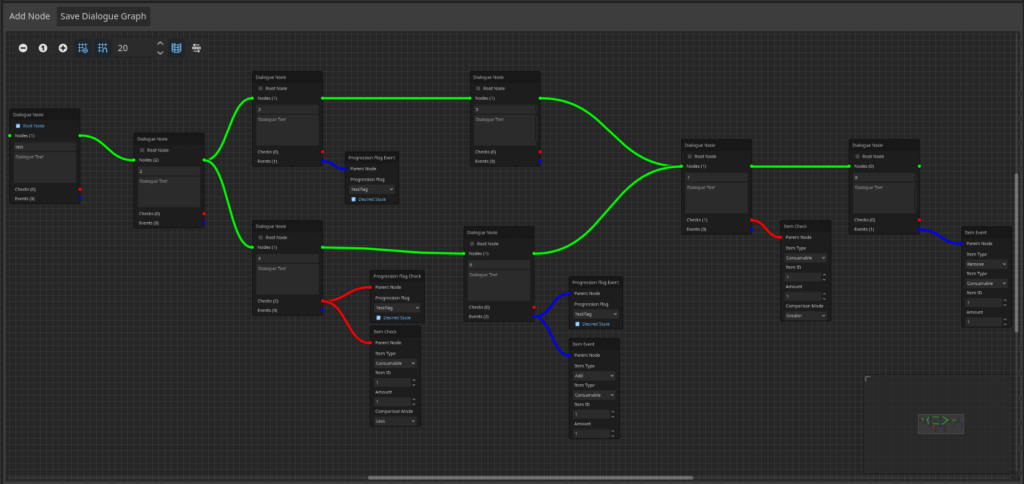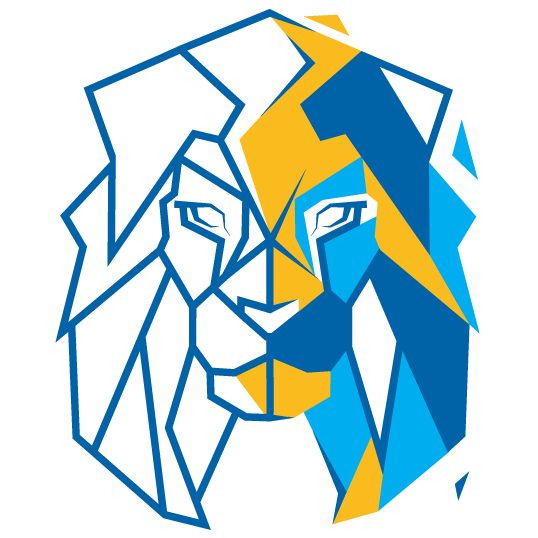I spent the little time I had today extending the dialogue graph to include events now. I’ve only implemented two – those are adding or removing items, and setting or unsetting progression flags.
But as I’ve previously discussed, implementing 2-3 nodes is typically all it takes to figure out what needs to be generalized on a higher level.
What I mean by that, to peel back the curtain for a second, is that typically what I’ll do when designing something like this is start hyper-specific.
So for example, it’s time to make an event system. I know there’s gonna be a bunch of events, so I know eventually there will be elements common to all events, but I don’t know what they are yet.
So I pick one, in this case it was adding items, and I develop just that event. Then, once that’s done, I pick *another * event. In this case it was setting a progression flag. When I developed that event, it made clear which parts of the item event also applied to the flag event. What that allowed me to do is make a general “Event” class and have the “Item Event” and “Flag Event” extend it.
There will undoubtedly be more events to add later – and in fact I already know what some of them are – but for now, this is “good enough”.
I can get really deep into development with just items and progression flags.
No fun gif again today, it’s just another image of the update graph – the events are the blue line nodes. All of this works as expected, including saving and loading.
The next step is to implement the actual display portion of this, which will travel through the nodes, check the checks, present options, fire off the events, etc.


